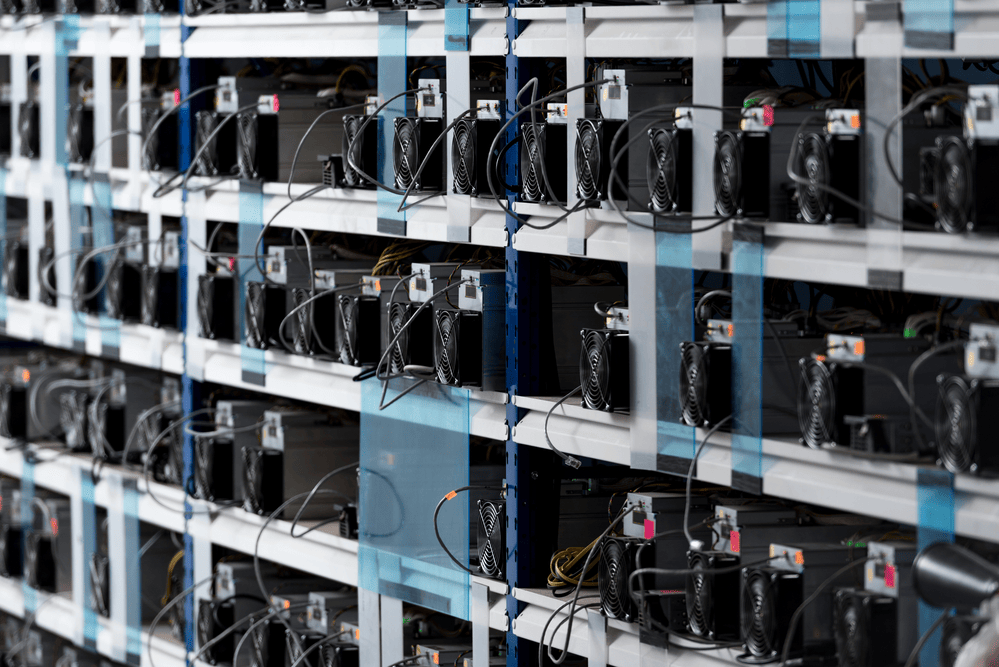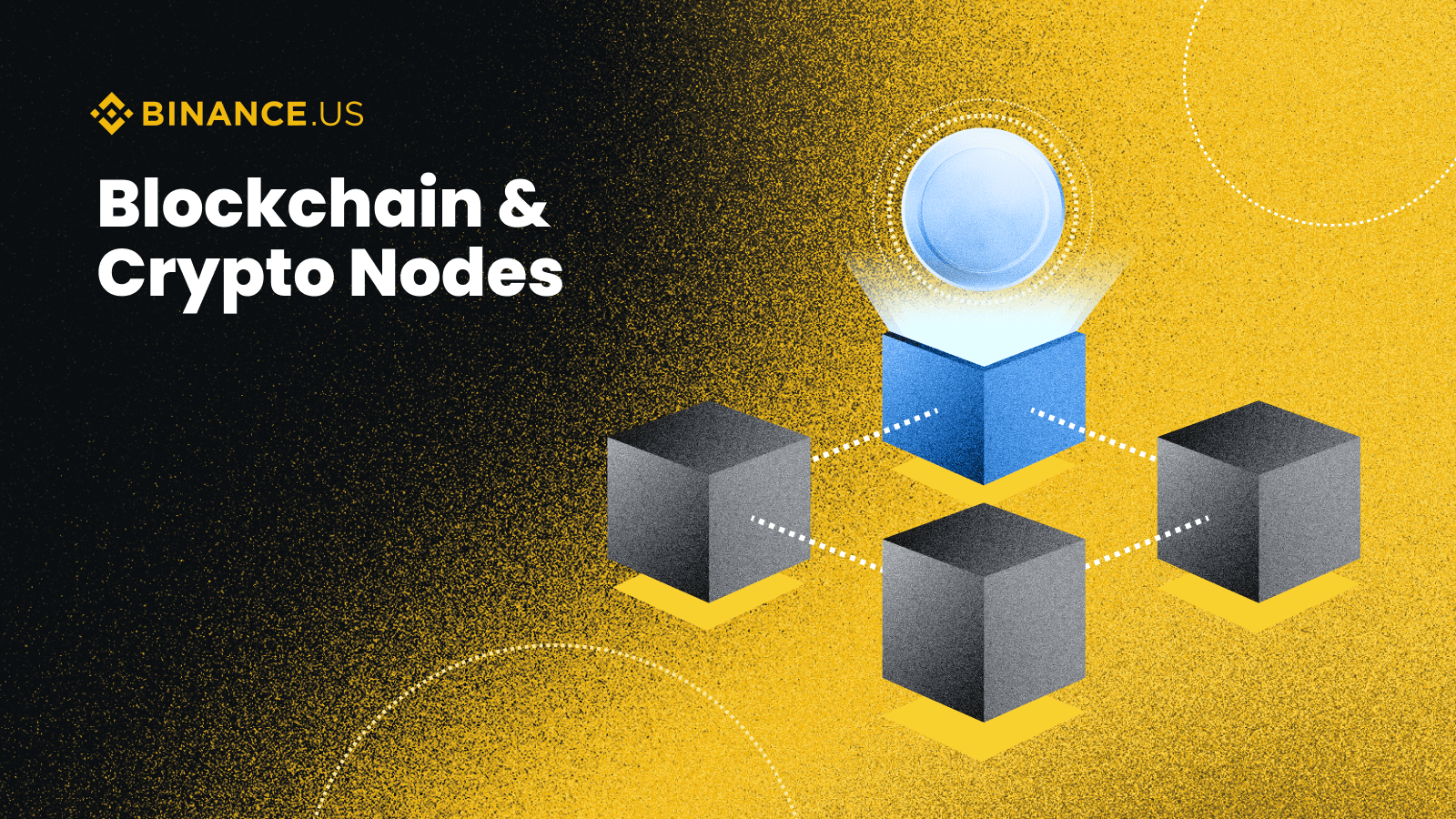Different types of crypto nodes form the infrastructure of any crypto blockchain.
Crypto nodes are a fundamental concept in understanding how blockchains and crypto transactions work. Like a lot of blockchain jargon, “crypto nodes” might sound like something confusing and technically complex, but the topic can actually be broken down quite simply.
Table of contents
Back to basics: How blockchains work

To understand crypto nodes, we first have to have a handle on what a blockchain is and how it works.
The blockchain that underpins a cryptocurrency or token can be thought of as a transaction ledger. New transactions make up blocks, which can be compared to the pages of a paper ledger.
Unlike traditional financial systems, the ledger — the record of all of the transactions which have taken place and how much each user holds — isn’t held by a single administrator, such as a merchant or a bank or a credit card company. Instead, the ledger is decentralized.
So what exactly does “decentralized” mean? You might initially guess that it’s like splitting the ledger up into individual pages and storing them in different places. Using computer networking, the pages could then be reassembled into a complete ledger when necessary.
However, this approach would have some serious drawbacks. If individual pages of the ledger were ever lost, the transaction records they contained would be lost as well, and it would get harder and harder to reconcile the overall ledger.
How do we solve the problem of keeping the blockchain transaction ledger decentralized without running the risk of data being lost? Let’s take a look.
The role of crypto nodes

A blockchain is made up of crypto nodes, which allow blockchains to be decentralized without the danger of losing transaction data integrity.
In a generic sense, the word “node” simply means an intersection point that’s part of a network. Crypto nodes make up the blockchain network of a particular cryptocurrency or token.
When new transactions are added to a blockchain, the block broadcasts the information to all of the nodes in the blockchain network. If the nodes agree on the validity of the transactions, then they are added to the block “ledger.”
Each node holds an up-to-date record of the transactions that have taken place. Each node is not just one page of the ledger, but the entire ledger, or at least (depending on the exact type of node) the ledger’s current “bottom line.”
The more complete nodes a blockchain has, the more secure it becomes. Even if bad actors were to attempt to commit fraud by altering data in one particular node, the altered data would be rejected by the other nodes because it doesn’t match up.
If the data in a particular node is lost entirely, then the rest of the network isn’t impacted the way a paper ledger would be by a lost page. In fact, even if the entire blockchain were lost except for one, it would still be possible to recover from that single remaining node.
In short, nodes serve absolutely essential functions as the infrastructure and custodial authority of a blockchain.
So coming back to our earlier question about what a blockchain is made of, you can see how “nodes” is just as valid an answer as “blocks.” In fact, nodes are actually more important than blocks, because without nodes, no new blocks can be added and existing blocks could be lost.
A crypto node can exist on many different types of devices, from servers to home PCs to smartphones, depending on computational and storage needs.
Different node types work in different ways depending on the protocol of a particular blockchain and their role in it.
Types of crypto nodes

Altogether, blockchain experts classify nodes into 10 different types. Keep in mind that some node types are subclasses of others. Not all of the types are equally important, and not all of them are used in every blockchain.
Full nodes
Everything we have said about crypto nodes up to this point applies to full nodes. Full nodes are the servers that allow a decentralized blockchain network to function. They hold together the consensus of the blockchain and verify data.
In addition to maintaining the blockchain as it is, full nodes are also the determiners of where the blockchain is going. When there’s a proposal for a change to a blockchain’s functions, a majority of full nodes must usually agree to it. This process can lead to what is known as a fork.
Full nodes fall into two classes: archival and pruned. The archival full node class itself includes several subtypes.
Archival full nodes
An archival full node has the capabilities of a full node but also functions as an archival repository of the entire blockchain database. Archival full nodes allow for querying historical data about transactions.
Within the classification of archival nodes, there is a further variety of subtypes: authority, miner, staking, and master nodes.
Authority nodes
Not all blockchains are 100% decentralized. Some of them are only partially decentralized, with some control in the hands of an organization or community.
In these blockchains, authority nodes are what authorize new nodes to join the network. They broadcast information to and manage access permissions for non-full nodes used by other participants.
Miner nodes

For many people who don’t have a high level of familiarity with crypto, cryptocurrency and mining go hand in hand. But not all cryptocurrencies and tokens can be mined. Mining is associated with blockchains that use a proof-of-work consensus mechanism, such as Bitcoin.
For crypto that can be mined, miner nodes try to solve a mathematical problem and then broadcast the solution to be verified by other nodes and added to the chain, receiving crypto as a reward.
Staking nodes

While mining nodes are used in blockchains with a proof-of-work consensus mechanism, staking nodes appear in networks like Ethereum, which use the proof-of-stake system.
Staking nodes are created by crypto holders locking down some of their holdings to use as collateral in hopes that the network will select them as a validator for new transactions and reward them with a fee.
Master nodes
Master nodes are full nodes that serve entirely custodial functions on the blockchain. They maintain the ledger and verify the integrity of new transactions, but they cannot add new blocks to the chain themselves.
As is the case of staking nodes, individuals running master nodes can receive free crypto as compensation for supporting the blockchain network.
Pruned full nodes
Pruned full nodes are the other primary full node class (after the archival full node with its subtypes).
Pruned full nodes verify transactions and maintain consensus on the blockchain, but they do not have a complete copy of the historical blockchain database. Instead, they delete blocks, starting with the oldest, to stay under a preset storage size limit.
Light nodes
Light nodes are the first type of non-full crypto nodes. Their role in the blockchain is purely to communicate information and facilitate transactions. They don’t have a full copy of the blockchain and cannot validate new blocks.
Lightning nodes
The next non-full node type is the lightning node (not to be confused with light nodes). These are used to establish connections outside of the full blockchain network, such as between a merchant and a customer.
A lightning node creates a channel between the two entities where funds can be deposited for goods or services. When the customer finishes, the channel closes and the balance of the transaction is broadcasted to the full network.
Super nodes
The final type of non-full node is the super node, a broad term used for nodes that perform specialized tasks which vary depending on the particular blockchain network. Examples of these include implementing technical upgrades or enforcing network rules.
Learning about and trading crypto with Binance.US

As is the case with most crypto-related terminology, you don’t need a high level of technical expertise to understand the concept of crypto nodes. Once you understand how nodes make up the fundamental infrastructure of blockchain networks, the rest starts to fall into place.
We believe in making crypto more understandable and accessible to all. If reading our educational resources has made you feel ready to start your crypto journey, register for a Binance.US account or download the Binance.US app today.
Download the Binance.US app to trade on the go: iOS | Android
This material has been prepared for general informational purposes only and should NOT be: (1) considered an individualized recommendation or endorsement of any digital asset or services discussed herein; and (2) relied upon for any investment activities. All information is provided on an as-is basis and is subject to change without notice. We make no representation or warranty of any kind, express or implied, regarding the accuracy, validity, reliability, availability, or completeness of any such information. Binance.US does NOT provide investment, legal, or tax advice in any manner or form. The ownership of any investment decision(s) exclusively vests with you after analyzing all possible risk factors and by exercising your own independent discretion. Binance.US shall not be liable for any consequences thereof.


